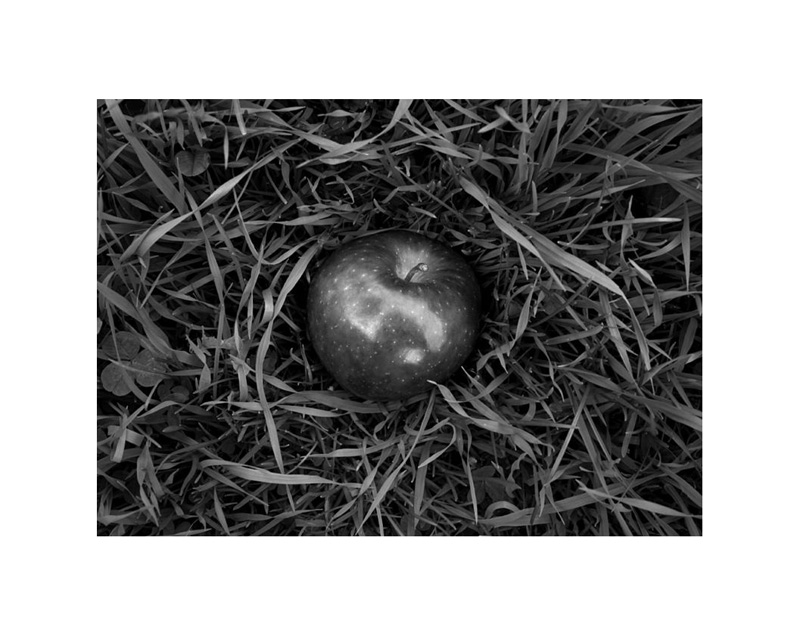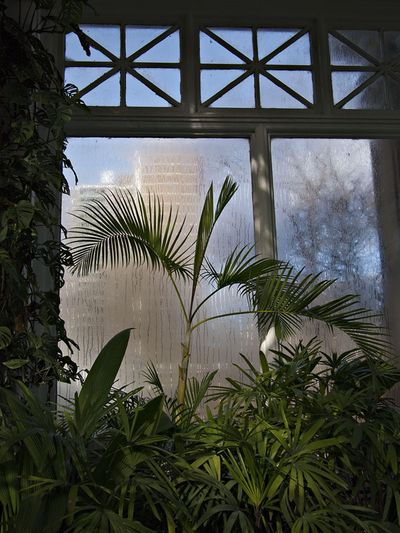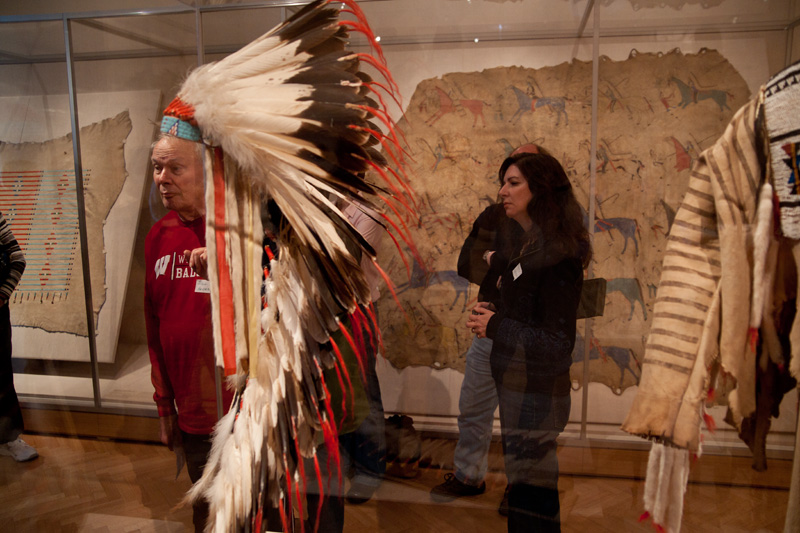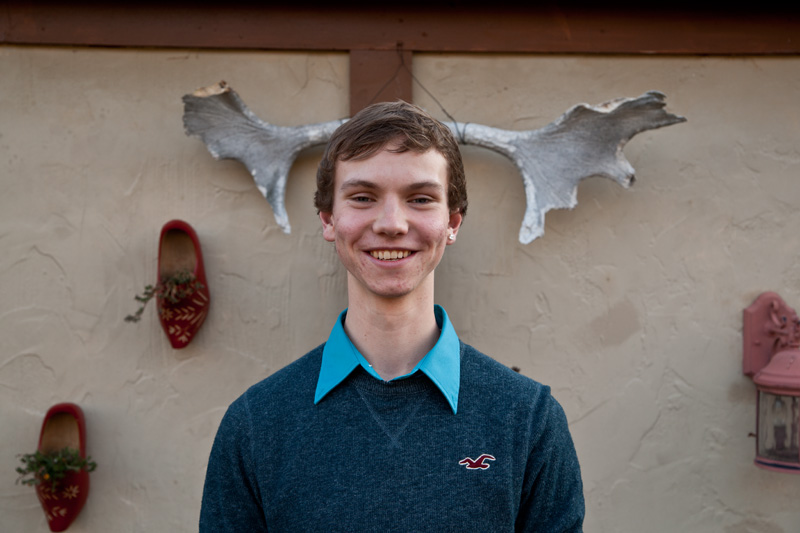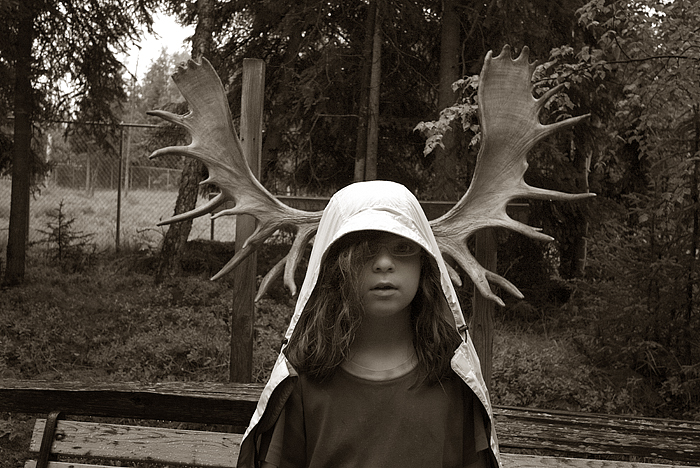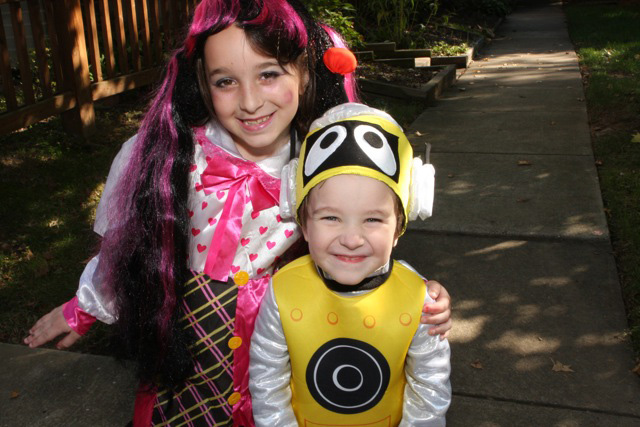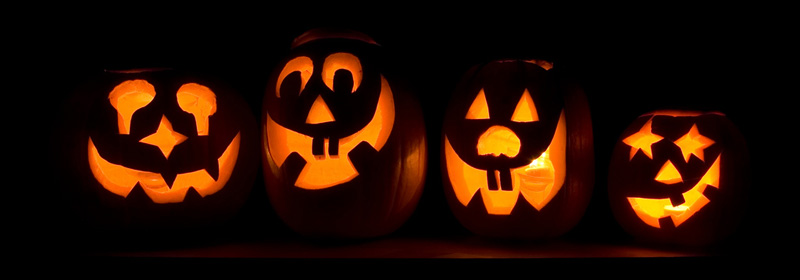Well, my current print sale is, let's just put it this way, an "esoteric" success—but definitely not a popular one. It's sold very few so far, and the total number of sales will be very low. In other words, it's a flop. Depressing.
It's consoling that several of the few that have sold have gone to some of TOP's most illustrious readers—people "in the know" in one way or another—well-known photographers, people in the photo museum community, collectors. But TOP readers as a whole aren't responding as positively. I guess I should be complimented that the people who are buying it are people with discrimination and good judgment and taste. I'd rather it were popular, frankly.
Chris Norris wrote, in the Comments:
Dang, I thought I had read $29 and was READY TO BUY. $290 is totally fair, but way out of my range for...well, anything aside from groceries and rent.
I'm in the process of editing a set of about 60 of the very best pictures from all the shooting I did from 1980 to 2000. I had in mind printing them slowly, myself, in my darkroom, and occasionally offering the best ones (the ones likely to be popular) for sale here on TOP. My thought was that I would offer 6x9" RC prints, signed on the back, in an open edition, for very little money, and larger, fiber-based prints, in small limited editions, signed on the front, for a lot of money. I'm thinking of selling the larger prints for something like $2,500 each, in an edition of eight or 10 and hoping to sell at least one, and then offering the smaller prints for a very low price, something like $50. Actually, Chris's $29 isn't out of the question either, for the smaller prints.
That way those who have the means and want the "best version" can have it (I do know people who have paid many times $2,500 for single prints), and those who have limited means (which describes me too, despite my fancy-schmancy Sony) can enjoy buying an occasional original print of a picture they happen to like without spending very much money. And some of the prints of my own that I have framed and on the wall are, yep, 6x9" prints. I really like 6x9" prints framed in 14x17" mats. Here's an example of what that looks like, from an old post.
The problem of print pricing
It seems to me that this scheme would solve the problem of "price sensitivity." Here's the problem in a nutshell: $290 is actually so cheap for a print that many collectors do not want to spend that little—the perception is that anything even marginally worth owning would cost a minimum of several multiples of that. For perspective, when I was an art student way back in the 1980s, $350 was considered a standard (or at least a common) price for a student print, and graduates were expected to charge more like $650 to $900 for a print—in that region somewhere. At least $500.
And yet, $290 is too much for some people (like Chris) to spend on something that is a totally discretionary purchase and totally nonessential. I understand that—totally. I remember in 2004, when I was unemployed and had lots of time on my hands, I thought I might write a screenplay, and I looked into buying a screenwriting program (I think it was called "Final Draft"). But it cost $275, which was a drop-dead deal-killer. Just absolutely out of the question at the time. Didn't matter if the chimerical carrot of making a million from a hit movie was dangling out there temptingly in my fantasies—$275 was too much of an investment to make in a pipe dream*.
I wonder how my two-tier scheme sounds to Chris—and others? Ironically the only thing that bothers me about it is that it feels somehow insulting to me to sell one of my prints for less than the cost of a readymade frame from Target. I always thought that was sort of the definition of low- or middlebrow art, such as ordinary storebought posters and the like, the kind of things people hang in basement bathrooms and rental properties. I think I could get past that, though—I ain't so proud.
Portrait pricing
I've long had problems with pricing in general. When portraits were a substantial part of my living, I went through a strange transmogrification. I started out doing portraits as art, not paying or being paid by the subjects. So many people liked them that I was asked repeatedly to do them on commission. But when I started accepting pay for them, not only did I encounter the problem of price sensitivity, but I was gradually led away from what I wanted to do and into a different style entirely. I started out doing small, black-and-white, relatively casual environmental portraits. After a few years in the "business," I was charging a sitting fee of $675—not peanuts in the 1980s—and attracting even some nationally famous people as clients, but I had gradually shifted over into making large, more formal studio portraits, in color, because that's what more clients seemed to be impressed with. I was brought back down to earth when a museum curator who was familiar with my early portraits asked to see a portfolio of recent portrait work—and all I had was the "commercial" work I'd been doing for money. I had to face the fact that I was no longer following my muse—merely following the money.
I've actually never found a solution that works for me for portrait pricing. Now I do portraits for friends and occasionally relatives, not accepting any pay at all. That, too, is not an ideal solution—from either party's perspective. Because my work is free, people have a tendency to sometimes treat it as if it were worthless. From the clients' side, people get frustrated because I'm not working for them and they can't tell me what to do—and they want to be able to do that. If I don't like a portrait, for example, I won't release it. That can frustrate people. It's really not an ideal situation from either side.
The one thing I've never tried is paying people to model for me. The problem with that is easy to anticipate: it's that price sensitivity would come to the forefront again—just from the other direction. I know a number of people who are so wealthy that no amount of money I could pay them could possibly be the slightest inducement to them. Others might simply be offended if I tried to pay them to sit for a portrait. Others who are poorer might be over-eager for the money and nag me to use them as sitters. So I'd be the "boss" if I were the one paying, and in control—but I still wouldn't be free of the influence of the monetary arragements on the process.
My uneasy relationship with pricing continues....
Mike
*Yes, I do know there are cheaper screenwriting options out there, including just doing all the formatting yourself in a WP program. I'm not a screenwriter; John Gregory Dunne's scarifying book Monster: Living Off the Big Screen talked me out of trying.
talked me out of trying.
ADDENDUM: A significant number of the comments so far (the first 40 or so) responded to only the first two paragraphs of this post. I can assure everyone that I know full well that a) many people don't like the picture I offered, and b) many people prefer not to spend the money or don't think it's worth the asking price. Can anyone who knows me imagine I have any problem with either of those things? I don't, of course. The post is really asking how people would like a two-tier pricing scheme—so, thanks for the responses that addressed that.
A few frankly obnoxious comments suggested I was claiming that you have to be "sophisticated" to "understand" the picture in the sale. That's absurd. First of all, I would never do a thing like that. I have many faults, but snobbery is not one of them, and anyone who reads me should know that if they know anything. Secondly, it's an extremely simple picture—too much so for some. Third, I've taken great pains to explain exactly what it means to me in plain English. Anyone can understand what I mean. Anyone can also discard my meaning and substitute their own—as Tom certainly did in his "Featured Comment" below, with an interpretation that never even occurred to me! —MJ
Send this post to a friend
Please help support TOP by patronizing our sponsors B&H Photo and Amazon
Note: Links in this post may be to our affiliates; sales through affiliate links may benefit this site. More...
Original contents copyright 2011 by Michael C. Johnston and/or the bylined author. All Rights Reserved.
Featured Comment by Benjamin R. George: "I think part of it may be the expectations you've set with the pricing of previous offers. I've gone through the archives, and the prices for the first print in the past few TOP print offers were $140, $175, $395, $155, $180, and $150. These included a lot of inkjet prints, but also more unusual and impressive-sounding processes like dye transfer ($150) and platinum/paladium ($180). The only offer with a higher single-print price was the Turnley/Mitrovic offer, and for that you spent a while talking up the excellence of the master printer involved, and the subject matter was (I suspect) more generally appealing (though less to my personal tastes) than with 'Color Picture.' The $290 price is quite good in absolute terms, but your success in arranging such amazing deals in the past may have worked against you here, especially when combined with your modesty, which has deprived this offer of your usual very strong sales pitch."
Featured Comment by Jeff: "I can relate. I recently hung a show at the NBC Studio building in Washington, D.C., along with three other photographers. The framed prints were for show as well as sale, with no commission, but also no opportunity to market. I needed to decide how to price my work.
"It was a secure building, so no casual street traffic, but prints could be seen by building employees as well as TV staff and personalities present for weekend tapings of of various popular weekend news shows (Meet the Press, etc). Our works were quite different, as were the framing presentations. But I didn't get to preview the others' work in advance. The work was to hang for just a month, unfortunately at a slower late Summer time. Not ideal for sales; more the opportunity to present in a hard-to-book location.
"I print, custom mat and frame each of my prints, using high quality materials, including conservation UV glass. If someone took one of their own photos to a local frame shop, the equivalent framing alone would cost them $125–$150. Buying in bulk allows me to produce a finished 14x18 framed print for just under $30, not accounting for my labor.
"I settled on $175 even though I was tempted to price higher. I made one larger centerpiece print for $295. My prices turned out to be higher than the others. A crap shoot.
"As luck would have it, each weekend that was supposed to generate our customer traffic was interrupted, first by an earthquake, then a hurricane, then the 9/11 anniversary (Homeland Security was headquartered nearby).
"Final tally...two sales. Oh well. But at least the building manager told me that the work received some of the best comments he remembered hearing (the space is booked two years in advance, and has been around for many years); so that was encouraging, but not rewarding financially. People did however take 200 copies of my bio, so maybe I'll get a call for some holiday gifts. I won't hold my breath.
"Should I have priced the work under $100 and perhaps made more sales? What's my product, and time and effort, worth? Hard call in a tough economy.
"In advance of the show, I attended many art fairs and discussed pricing with photographers who were both local and from out of state. The story was always the same. A decade or two ago they were making $10,000+ for a three- or four-day show. Now they are often happy to break even, and many of their competitors have gone out of business. (Tents and other show supplies are available on the cheap.) They attribute the decline to various things, including the economy, the proliferation of photos on the web and eveywhere else (cell phones) and the increase in number of local community venues showing art; the bigger fairs have lost their exclusivity. Tough times for 'fine art' photographers who haven't worked hard to define and market their own niche."
Mike replies: You shame me, Jeff...when I say my sales will be "very low," that means 20 or 30. Which might be "low" for a TOP sale but would indeed be very high for a gallery show. I shouldn't complain.
Featured Comment by Tom: "I feel this image is mocking the red green color blind."
Featured Comment by Bernard Scharp: "To be honest, I was very disappointed when I read that the prints in this sale were not made by you.
"Until now, in most TOP print offers, the prints themselves were special in some way as well, not just the photographs, (platinum, dye-transfer, made by Cartier-Bresson's personal printer) and made either by the artist himself, or by someone who was himself an interesting artist. A digital lightjet print, while very good, is in no way `special'. I can take any of my digital files, and have such a print of it on my desk in two days. (I have several, actually).
"You have often written that you're an okay photographer but an excellent printer. I've also heard you say your photoshop skills aren't anything special. Yet for this printoffer you chose to do everything except the printing. To me it feels a bit like Ctein taking a negative from his portfolio and having it scanned and printed by Dwayne's. The print would undoubtedly be good, but I wouldn't pay the same money that I have paid for his dye-transfer print.
"Add to that the fact, explained better by other people in these comments, that the story behind this picture might be more interesting than the picture itself, and I'll have to pass on this one.
"Had this been a print made by you in your own darkroom (not realistic with this being a digital photograph, I know), I'd have gladly plunked down the $290 (I've been hoping for such a printoffer ever since you started building your darkroom, though $2500 will definitely be out of my reach), but with this print I just don't feel the chemistry. And I think chemistry with the work is important when building a print collection.
"Now, that's my personal opinion, so it's worth less than the pixels I wrote it on. It also doesn't change the fact that I love TOP, will stay a subscriber, and hope you sell lots of prints."
Featured Comment by Brian: "I like 'Color Picture' because it strikes me as humorous. Even non-photographers unfamiliar with the technical issues involved can look at it and see the irony of a red apple on green grass depicted in B&W. But I won't be putting it on my wall anytime soon. I just spent several thousand on a new camera and nice lens and I'm working on turning my portraiture skills into a small side business. And it's in that context that I very much appreciate the discussion of the problem of pricing."
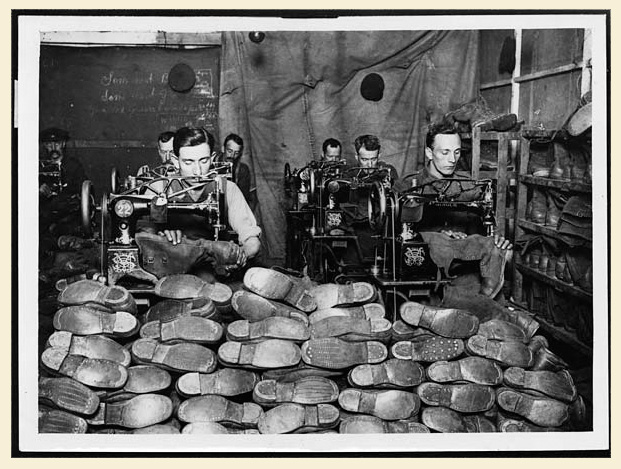 Workmen repairing army boots on the British Western Front in France, WWI. Photo courtesy Scottish National Library.
Workmen repairing army boots on the British Western Front in France, WWI. Photo courtesy Scottish National Library.